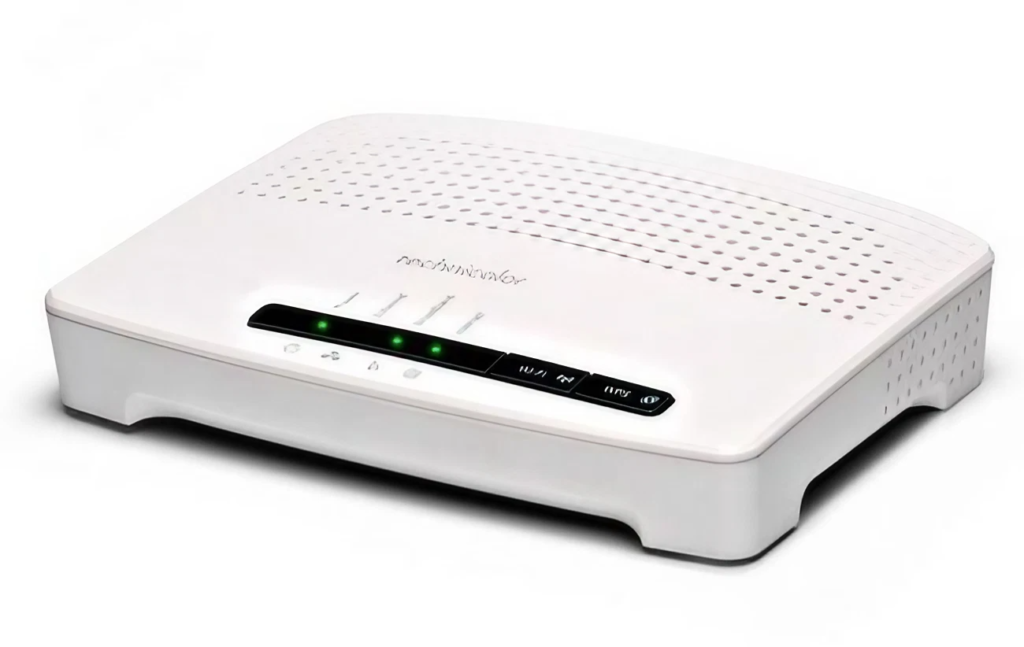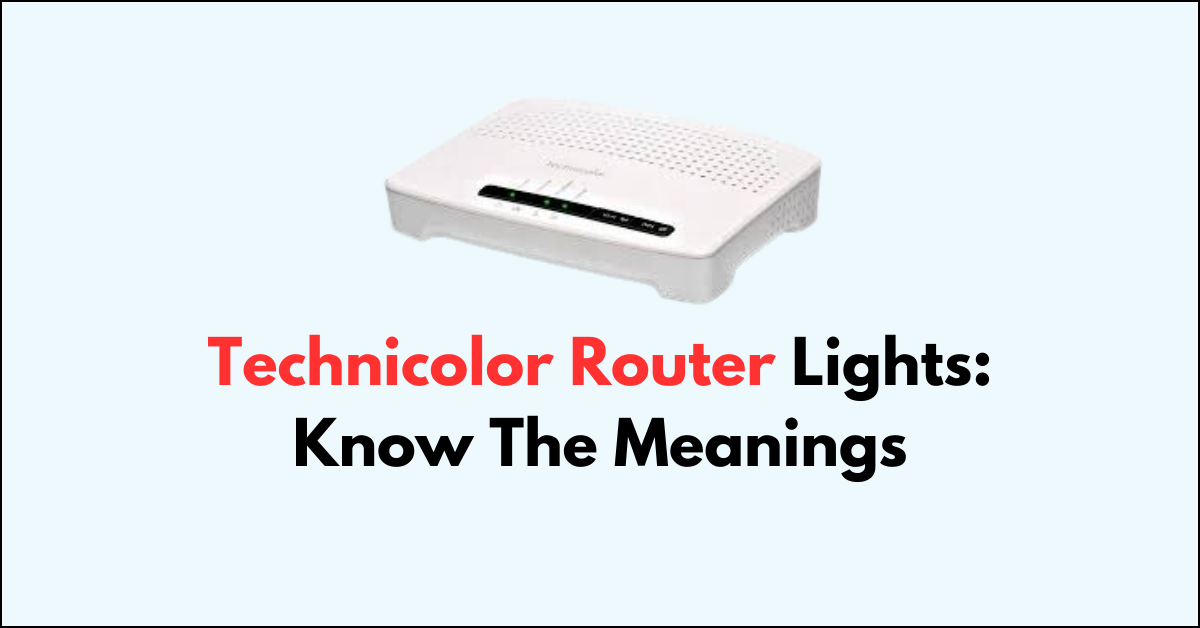Are you curious about the meaning of the lights on your Technicolor router?
Understanding what each light signifies can help you troubleshoot connection issues and ensure your network is functioning correctly.
In this article, we will help you understand what each light on your Technicolor router signifies.
technicolor router lights meaning

Power LED:
- Solid green: The power is on, and the router is operating normally.
- Power off: The modem is not receiving any power supply, which could be due to unplugged cables or power outages.
- Solid red: This may indicate a hardware or software failure within the router.
- Flashing green or orange: The router is conducting a firmware test or update. It’s best to wait for this process to complete without interrupting it.
DSL Light:
- Solid green: Successfully connected to a DSL network.
- Off: No connection to a DSL network is present.
- Slowly flashing green: The router is searching for a DSL connection.
- Rapidly flashing green: A DSL network has been located, and the router is attempting to connect.
- Red: The router is unable to establish a connection to a DSL network.
Internet Light:
- Steady green: There is active data transmission, indicating a stable internet connection.
- Flashing green: Data is currently being transferred between the server and connected devices.
- Off: The modem may be set in transparent bridge mode and is not broadcasting WiFi.
- Flashing green to red: The modem is occupied with configuration setup.
- Solid orange: The modem is powered on but not yet activated; ISP activation may be required.
- Solid red: There is a network authentication failure, potentially due to incorrect login credentials.
WAN/LAN Indicator:
- Solid green: A WAN/LAN port is connected to the network.
- Flashing green: Data is currently being transmitted through the WAN/LAN port.
- Off: No connection is detected on the WAN/LAN port.
Ethernet LED:
- Steady green: An Ethernet port is active and connected to a device.
- Flashing green: This indicates that data is being transmitted through the Ethernet port. It’s a normal sign of network activity as devices communicate with the router or the internet.
- Off: The Ethernet port is not currently in use. This could mean that no device is connected to that specific port or the connected device is turned off or not communicating.
USB Indicator Light:
- Solid green: A device is successfully connected via the USB port, and the router has recognized it.
- Flashing green: There is ongoing data transfer to or from the device connected through the USB port. This could be a sign of reading or writing to a USB storage device.
- Off: The USB port is inactive, which means no device is currently connected, or the router is not detecting any USB device.
Wireless LED Light:
- Solid green: The router’s WiFi is turned on and operational. Devices should be able to see the network and connect to it.
- Flashing green: There is wireless data transfer occurring. This blinking indicates that devices are actively using the WiFi network for internet access or network communication.
- Orange: The WiFi is turned off but still enabled. This could be due to the WiFi being manually disabled through a button on the router or through the router’s settings.
- Off: The WiFi is not enabled. This could indicate that the wireless network is turned off in the router’s settings or there may be an issue with the router’s wireless functionality.
WPS LED:
- Solid green light: The WPS (Wi-Fi Protected Setup) feature is active. This light typically turns off after a few minutes once the WPS process is complete.
- Flashing orange light: Indicates that there is WPS activity, such as a device trying to connect to the WiFi network using the WPS function.
